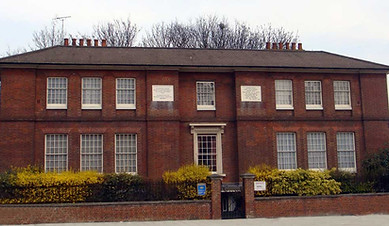Watts Opening 8th & 9th September
As part of the national Heritage Open Days event celebrating England's heritage and culture Watts Almshouses will open to the public on Saturday 8th and Sunday 9th September 10am-4pm. Visitors can tour the grounds with a guide and view an almshouse; one of the original almshouses will be open where possible. You can also visit the exhibition in the Board Room and discuss the services provided by Watts Charities. Refreshments and home-made cakes will be on sale.
Watts Opening 8th & 9th September
As part of the national Heritage Open Days event celebrating England's heritage and culture Watts Almshouses will open to the public on Saturday 8th and Sunday 9th September 10am-4pm. Visitors can tour the grounds with a guide and view an almshouse; one of the original almshouses will be open where possible. You can also visit the exhibition in the Board Room and discuss the services provided by Watts Charities. Refreshments and home-made cakes will be on sale.
Watts Opening 8th & 9th September
As part of the national Heritage Open Days event celebrating England's heritage and culture Watts Almshouses will open to the public on Saturday 8th and Sunday 9th September 10am-4pm. Visitors can tour the grounds with a guide and view an almshouse; one of the original almshouses will be open where possible. You can also visit the exhibition in the Board Room and discuss the services provided by Watts Charities. Refreshments and home-made cakes will be on sale.
Watts Opening 8th & 9th September
As part of the national Heritage Open Days event celebrating England's heritage and culture Watts Almshouses will open to the public on Saturday 8th and Sunday 9th September 10am-4pm. Visitors can tour the grounds with a guide and view an almshouse; one of the original almshouses will be open where possible. You can also visit the exhibition in the Board Room and discuss the services provided by Watts Charities. Refreshments and home-made cakes will be on sale.



Hayward House

The house is named after its original benefactor, Sir John Hayward who was born in London c1587. He was the second son of Sir Rowland Hayward who held many official positions including Lord Mayor of London in 1570 and 1591. Sir Rowland died of the plague in 1593 leaving his young widow, Katherine, with six children under the age of eleven.
Sir John Hayward married Anne Sandys, one of a prominent Kent family. In 1623 he was appointed Sheriff of Kent. They were living at Hollingbourne Hill at that time but later moved to St. Margaret’s, Rochester where Sir John died in 1636.
In his will he bequeathed his manor at Minster, Sheppey, for the relief of the poor in the parish of St. Nicholas, Rochester and any other parishes that his executors should choose.
In 1651 the sum of £50 per annum was set aside for the erection of a workhouse. However by 1718 the increase in the value of the estate was such that £630 was transferred to the Mayor and citizens for the perpetual support of three charity schools. Two in St Nicholas, Rochester (twenty boys and twenty girls) and one in Strood for thirty children from the parishes of St. Nicholas, Strood and All Saints, Frindsbury. The boys were to learn, by heart, the Church Catechism, some of the Psalms of David and the morning and evening prayer from the ‘Whole Duty of Man’. They were also to be instructed in reading and writing and the common rules of arithmetic. The girls were to be taught to read and the use of the needle.
This continued until 1790 when it was challenged by a descendent of one of the original executors who maintained that the wishes of Sir John Hayward were not being followed. The ensuing legal battle lasted for twenty five years.
In 1823 ‘The House of Industry’, as Hayward House was then known, was built from the proceeds of the money accrued during the legal battle for the ‘industrious poor of St. Nicholas’. It housed twelve aged persons.
The administration of the house was transferred to Watts Charity in 1960 and modernised the following year. In 1995 the charity began an extended programme of repair and conservation for which it was awarded the 1996 Conservation Award by the City of Rochester Society. The house, comprising six self-contained flats, was reopened officially on St. George’s Day, 1996.